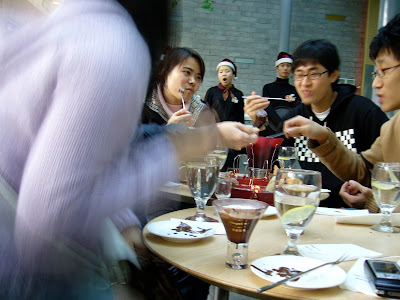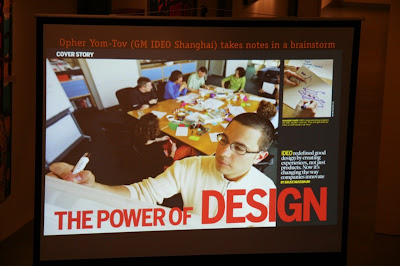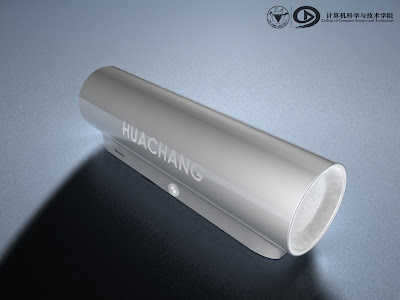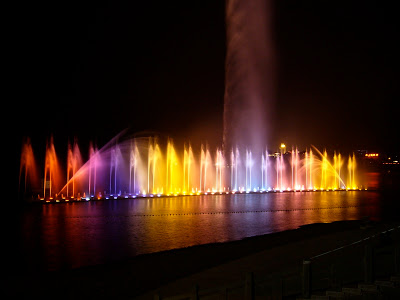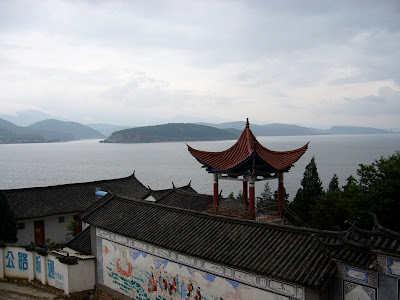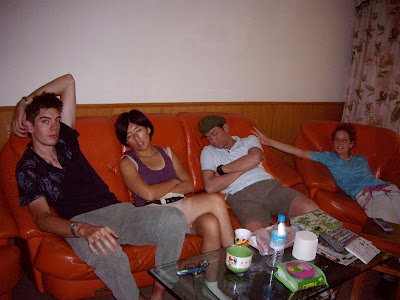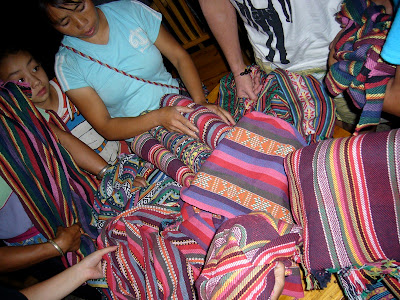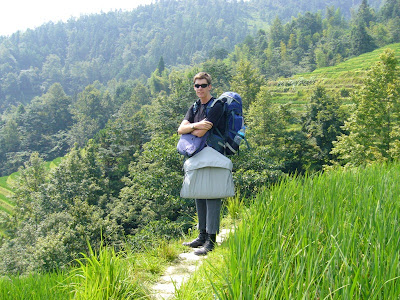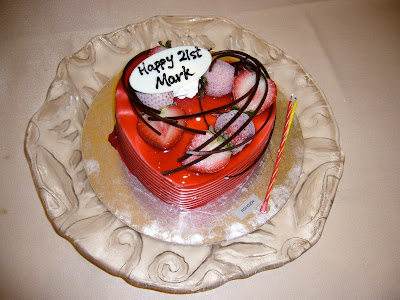 Pretty nice view I think. Lots of little mountains.
Pretty nice view I think. Lots of little mountains.Our first stop in our travels was Yangshuo, a small tourist city in Guang Xi province. It ended up being a 12 hour trip by bus - it was made longer because some of the roads that they would usually have taken were washed out by the typhoons a few days earlier. The bus we took was a sleeper bus, which meant that instead of seats, they had rows of bunk beds. The trip was quite good, although the beds were not quite as long as I'd hoped. Sadly, my phone was running out of power so it beeped a lot and I needed it on so I could stay in contact with Fan’s travel guide friend, Richard. Also, I had a temperature of 39°C for the whole night and was feeling a little sick.
 Inches from death. Or at least a little sick.
Inches from death. Or at least a little sick.When we arrived early the next morning, Richard met us and showed us around. He also showed me to a barefoot doctor, as my high temperature and illness were becoming an issue. The doctor looked at my tongue and gave me a poisonous drink with twigs that I was to drink 3 times a day for the next 2 days. She also said that if my temperature was not down by later that evening, I would need an antibiotic drip and some Chinese medicine energy solution. By that afternoon, I was beginning to feel better so I went for a boat ride with my other 3 friends to see some of the the famous mountains of the area. However, I began to feel unwell again by the end of the boat ride. When one of my friends went back to the doctor's place to pick up the rest of my medicine, the doctor was alarmed enough at my symptoms that she caught a motorbike back to my hotel room with my friend so that she could examine me in person. She determined that I was still too sick and that I would need a drip. (In China, drips are the preferred form of medicine for anything ranging from a cold to impending death.)
Her establishment could not offer such services, so we went to the establishment of a friend of hers from university, who specialised in drips and more Western medicine. This drip room was a small shop that opened out directly onto the street. They gave me the drip and complementary grapes.
That night, I sweated so much I had to change shirts many times and used every one of the shirts I had brought. The next morning, I felt a lot better and went for a bike ride to a place called Moon Mountain and then climbed it.
Moon Mountain was about an hour’s bike ride from the city. The mountain gets its name from a huge hole through the middle. They say that in the distance from every angle it looks like the moon at a different part of its cycle. In any case, we climbed first to the hole and then to the ridge above the hole. There were old ladies selling bottles of water at the top who were in much better shape than us. We were quite exhausted and they were casually running up and down the mountain with styrofoam freezers full of chilled water and juice. After that, we descended and returned to the city.
 One of my friends Kayaking.
One of my friends Kayaking.The next day, we went kayaking with Richard’s brother which was great fun except that we got exceptionally sunburnt and one of my friends ran into a tree, flipping her kayak and almost losing her camera in the water. The other friend who was with her had to jump in the river to retrieve the waterproof bag. He was very anxious to do this as it held his camera as well as hers.
On the way back from kayaking, we say a truck that had fallen off a small dirt road into a rice field. We had to wait while a crane lifted it back onto the road. This was quite cool and it was really interesting to see how the people dealt with such an occurrence. It was certainly treated a lot more casually than I imagine it would have been in a Western country. But perhaps that is because that kind of thing happens more often there.
That evening, we went to Richard’s house for cooking lessons. It was quite fun, although I think I will not open a restaurant just yet. We also got Richard advice on how to precede with our travels and where to go next. He was very helpful.
Here is a small collection of photos from my stay in Yangshuo.
